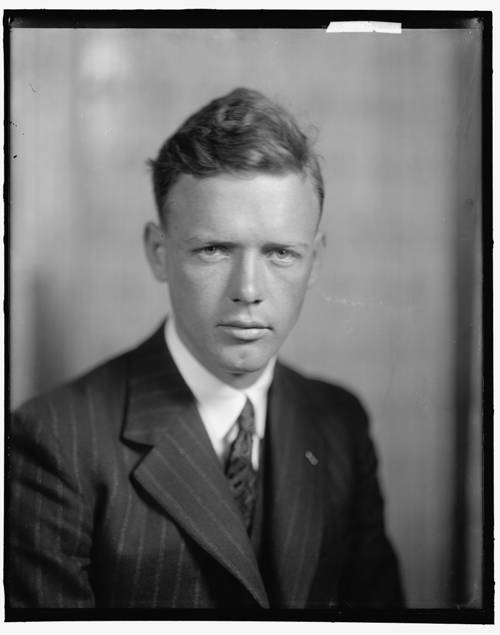
FAQ About Charles Lindbergh

Who was Charles Lindbergh?
Charles Lindbergh was a pioneering American aviator famous for making the first solo nonstop transatlantic flight from New York to Paris in 1927. His achievement earned him international fame and significantly advanced the field of aviation.

What was the Spirit of St. Louis?
The Spirit of St. Louis was the custom-built, single-engine airplane used by Charles Lindbergh during his historic transatlantic flight. It was designed for long-distance flights and was primarily funded by a group of businessmen in St. Louis, Missouri, thus its name.

How long did Charles Lindbergh's transatlantic flight take?
Charles Lindbergh's transatlantic flight took approximately 33 hours and 30 minutes. He departed from Roosevelt Field in New York on May 20, 1927, and landed at Le Bourget Airport near Paris on May 21, 1927.

What impact did Lindbergh's flight have on aviation?
Lindbergh's successful transatlantic flight had a profound impact on aviation by demonstrating the potential for long-distance air travel. It spurred public interest and investment in aviation, leading to advancements in aircraft technology and the growth of commercial aviation.

Where was Charles Lindbergh born?
Charles Lindbergh was born in Detroit, Michigan, on February 4, 1902. He spent most of his childhood in Little Falls, Minnesota.

Did Charles Lindbergh receive any awards for his flight?
Yes, Charles Lindbergh received numerous awards for his transatlantic flight, including the Medal of Honor and the Distinguished Flying Cross from the United States. He was also celebrated internationally and received honors from several countries.

What was Charles Lindbergh's early life like?
Charles Lindbergh grew up in Little Falls, Minnesota, where he developed an interest in mechanics and flight. He attended the University of Wisconsin-Madison to study engineering but left before graduating to pursue aviation training.

What other contributions did Charles Lindbergh make to aviation?
Beyond his famous flight, Charles Lindbergh contributed to aviation by advocating for air mail service, working on the development of early commercial airlines, and supporting advancements in aviation technology alongside the aviation pioneer Juan Trippe.

What was Lindbergh's involvement in World War II?
During World War II, Charles Lindbergh served as a consultant to aviation companies and later flew combat missions in the Pacific, despite initially opposing American involvement in the war. He was a technical advisor, helping to improve aircraft performance and tactics.

Was Lindbergh's family involved in aviation?
Though none of his family members were pioneers in aviation like him, Lindbergh's enthusiasm and contributions certainly inspired many in his generation, and his descendants have worked in various fields influenced indirectly by his legacy.

What was the Lindbergh kidnapping?
The Lindbergh kidnapping refers to the 1932 abduction and subsequent murder of Charles Lindbergh's 20-month-old son, Charles Jr. The case drew significant public attention and led to the passage of the "Lindbergh Law," which made kidnapping a federal offense.

How did Charles Lindbergh prepare for his transatlantic flight?
Charles Lindbergh prepared for his transatlantic flight with rigorous planning and modifications to his aircraft. He optimized the fuel capacity of the Spirit of St. Louis and trained extensively for long-distance flight, focusing on navigation and endurance.

What was Charles Lindbergh's view on the environment?
In his later years, Charles Lindbergh became a passionate advocate for environmental conservation. He supported efforts to preserve wildlife and natural habitats and spoke about the interconnection between technological advancement and the need for environmental protection.

What books did Charles Lindbergh write?
Charles Lindbergh wrote several books, including his autobiography, "We," which recounted his famous flight, and "The Spirit of St. Louis," which detailed his experiences and technical insights. The latter won the Pulitzer Prize for Biography in 1954.

Did Lindbergh face any controversies during his life?
Yes, Charles Lindbergh faced controversies, particularly regarding his views on isolationism and his involvement with the America First Committee prior to World War II. He was criticized for his non-interventionist stance and his comments about foreign policy, which were seen by many as sympathizing with Nazi Germany.

What other interests did Lindbergh have?
Apart from aviation, Charles Lindbergh had interests in technology, exploration, and conservation. He worked with several organizations on scientific research and environmental causes, partnering with his wife, Anne Morrow Lindbergh, in writing and advocacy.

How is Lindbergh remembered today?
Charles Lindbergh is remembered as a pioneering aviator whose accomplishments significantly impacted aviation history. Despite controversies, his legacy includes advancements in aviation, environmentalism, and his compelling life story, commemorated through museums, literature, and history lessons.

What is the Lindbergh Law?
The Lindbergh Law, officially known as the Federal Kidnapping Act, was enacted in 1932 following the kidnapping and murder of Charles Lindbergh's son. It made kidnapping across state lines a federal crime, significantly strengthening federal jurisdiction over such cases.

Did Charles Lindbergh have children who became famous?
Charles Lindbergh had several children, but none achieved the same level of fame as him. His wife, Anne Morrow Lindbergh, was a notable author and aviator, and their children have made contributions in various professional fields.

Where can I see the Spirit of St. Louis today?
The Spirit of St. Louis is currently on display at the Smithsonian National Air and Space Museum in Washington, D.C. It remains a centerpiece exhibit, attracting visitors interested in aviation history and Lindbergh's accomplishments.
